People
‘Record-Keeping Is Never Neutral’: Wolfgang Tillmans on How Photography Can Be Used as a Potent Political Tool for Change
Tillmans has been actively campaigning in defense of the European Union and the inclusiveness it represents.
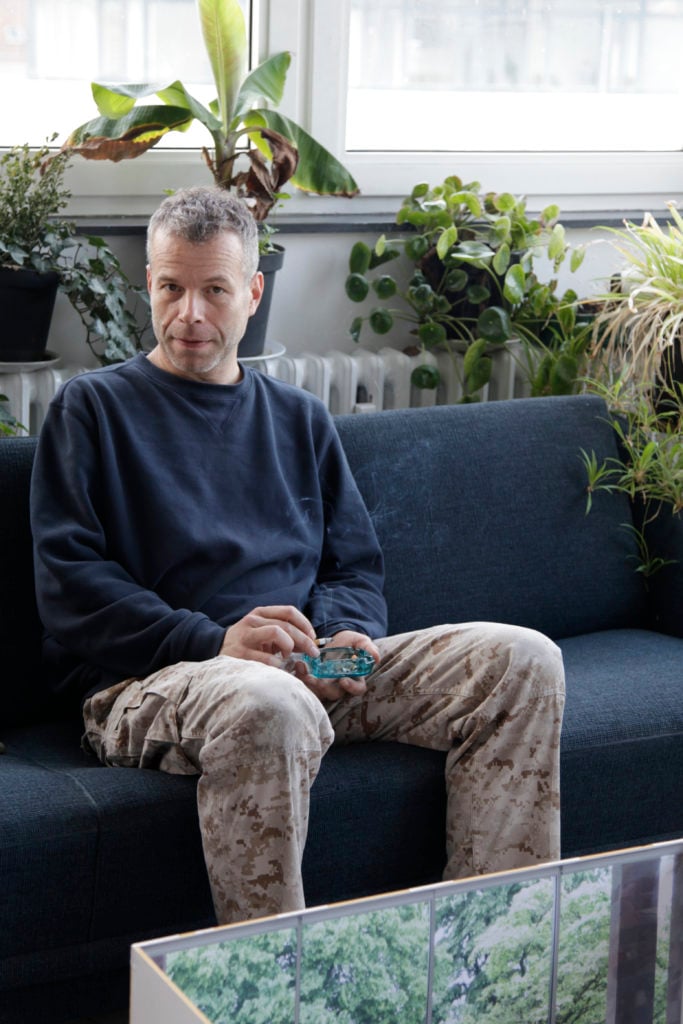
Tillmans has been actively campaigning in defense of the European Union and the inclusiveness it represents.

Kate Brown

It’s threatening to storm outside as Wolfgang Tillmans buzzes me into his second-floor studio in Berlin. But aside from the beating wind, there’s a calm that pervades this Sunday evening, as the 50-year-old Turner Prize winner sits down across from me in a large space usually occupied by around 15 employees. Behind him hangs a print of a young Chloe Sevigny holding an electric guitar, which was likely a test for the 1995 print Chloe, currently on view in his large exhibition at WIELS, his first institutional show in Belgium, which opened mid-February.
To call these months busy for Tillmans would be a truism. Year after year, the German artist takes on increasingly muscular exhibitions, accompanying legacy publications, not to mention political campaigns and album releases. In 2017, he had large shows at Tate Modern and the Fondation Beyeler. Next year, he will have a major retrospective at MoMA. Since last year, his institutional exhibition, “Fragile,” has been touring several African nations, including Kenya and Ethopia.
Despite his climbing prestige, Tillmans takes the same hands-on approach to each of his projects. His photographs are stuck on door frames and pinned above radiators, and his show in Brussels ends without any pictures at all, but with a recording of his voice in a room with a view overlooking the Belgian capital. Altogether, his work feels searingly personal yet universal.
Besides his art practice, Tillmans has been actively campaigning in defense of the European Union and the inclusiveness that it represents. He also maintains a music, sound, and video practice that will be featured at the MoMA’s new space called “the Studio.”
As we begin, I fumble with my recorder and he smiles, telling me that reporters often make this sort of remark when taking out their audio devices. “Imagine that I would do what journalists do, but with my camera,” he says cheekily.
This keen yet gently delivered observation is what separates Tillmans from the rest: he and his photographs speak with a quiet sense of authority without being assuming.
He puts his own phone out to record too, telling me that he collects audio recordings for his archive. His studio is meticulously populated with books, instruments, and memorabilia that spans decades and countries. With our recording devices on the table, Tillmans talks to me about his love of photography and Europe, his plans for his most sweeping retrospective yet, and why we urgently need activism as we continue to weather far-right and populist surges in the 21st-century.
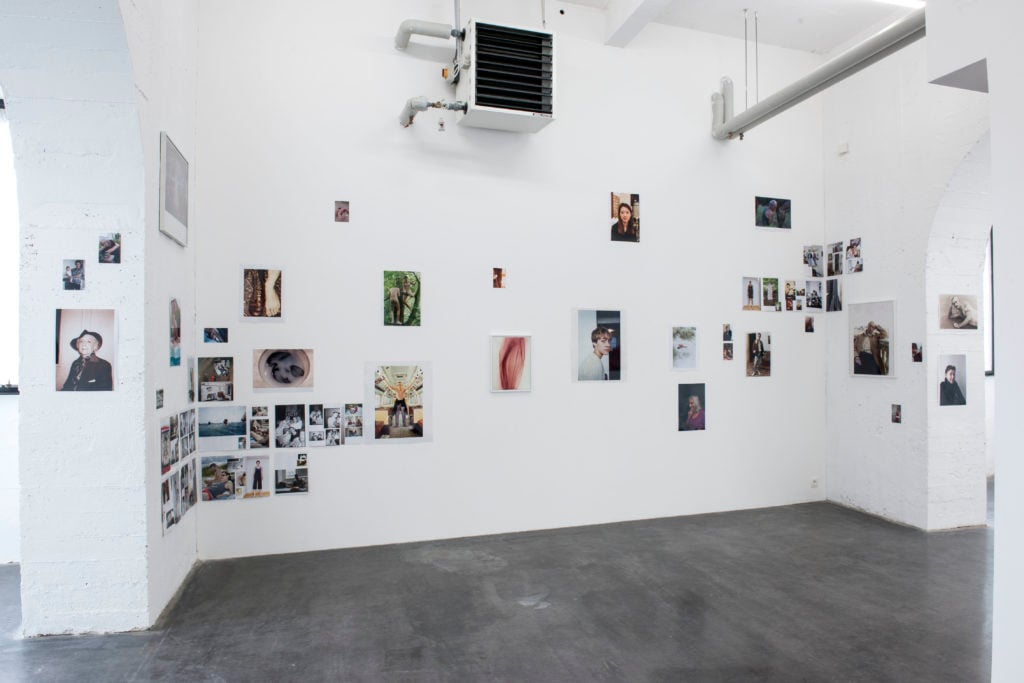
Wolfgang Tillmans “Today Is The First Day.” WIELS 2020. Photo: Philippe De Gobert.
Can you walk me through how you were thinking about your exhibition in Brussels?
I wanted to meet the audience where I am right now. The show is, on the one hand an experiment, a look into where things could develop. Maybe because of the MoMA show—which is very much a survey with a retrospective mode—I am looking back at 30 years of work right now. This process has made me rediscover works. Though they might not make it into MoMA, the show at WIELS has benefited from this fresh perspective, and new and old works sit side-by-side as contemporaries, even though they are 25 or more years apart.
You have been coming to Brussels frequently over the past few years to do political work in support of the European Union, and you are vocal pro-EU advocate. But that it is incidental to the fact that your show is titled “Today is the First Day,” and that it opened just after Brexit officially occurred on January 31.
You couldn’t make it up. I titled the show in the autumn when the Brexit date was still set for October 31. When it was postponed, I did not notice that there could be this potential conflict in interpretation. It was really only when I arrived in Brussels two weeks before the opening and had an early interview that one interviewer asked me about the connection. None of us had thought about it. Sometimes when you are so close to something, you are not seeing what is most obvious.
In the end, I had to make clear that it is not a celebration of that new dawn. The title came from a song I wrote in 2016 and it was purely from a personal perspective of freeing myself that I felt at the time. Of course, there always is need for hope. It didn’t seem strange in the end, it almost felt right. We cannot make the done undone.
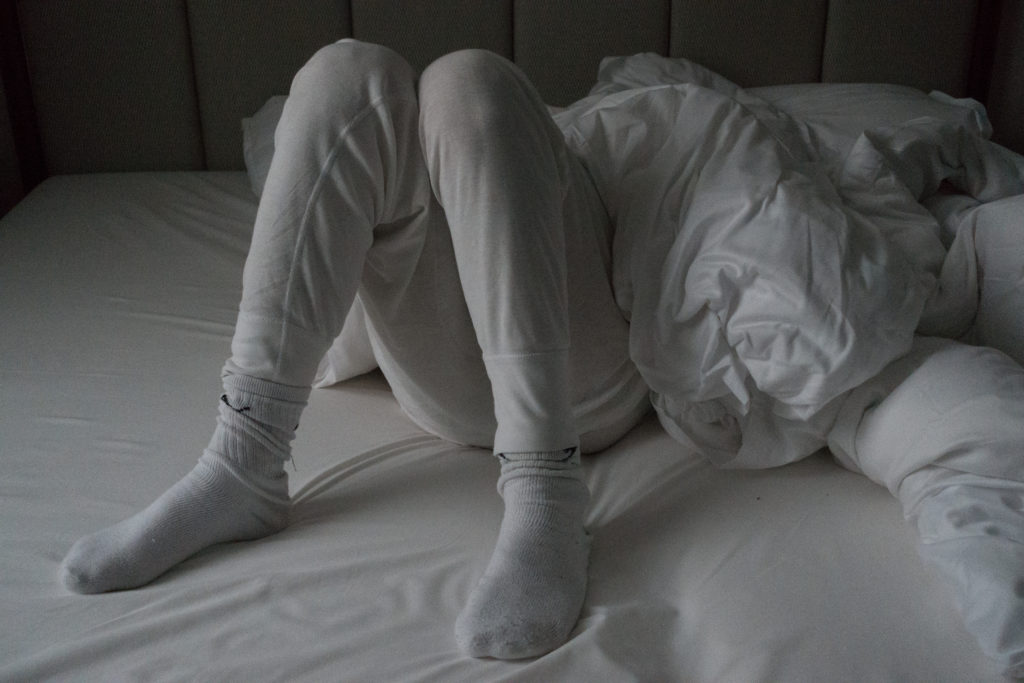
Wolfgang Tillmans, Kammerspiele (2016). © the artist, courtesy Galerie Buchholz, Berlin/Cologne, Maureen Paley, London, David Zwirner, New York, Galerie Chantal Crousel, Paris.
How are you thinking about Brussels and everything it represents to Europe in relation to this show?
At first, it seemed weird to not acknowledge it, but I decided not to have any political campaigning, though there are political works in different ways in the show, of course. There is just one newspaper page from the Neue Züricher Zeitung from the Vote Together European elections campaign in a side room upstairs.
Not only are you based in the UK and Europe, but you are an active pro-Remain and pro-EU campaigner. How are you feeling now that Brexit has officially passed?
When I grew up, World War II and the idea of reconciliation were still very much alive. We wanted to be interested in each other and befriend each other so that the past could never happen again. The idea is to end this process of getting closer—though this is not how anyone in the Brexit campaign would frame it, because they say it is not against other Europeans but against the “faceless” machine of the EU in Brussels. But it is of course shutting a door on 420 million other people, saying “we don’t want to share the house with you anymore.”
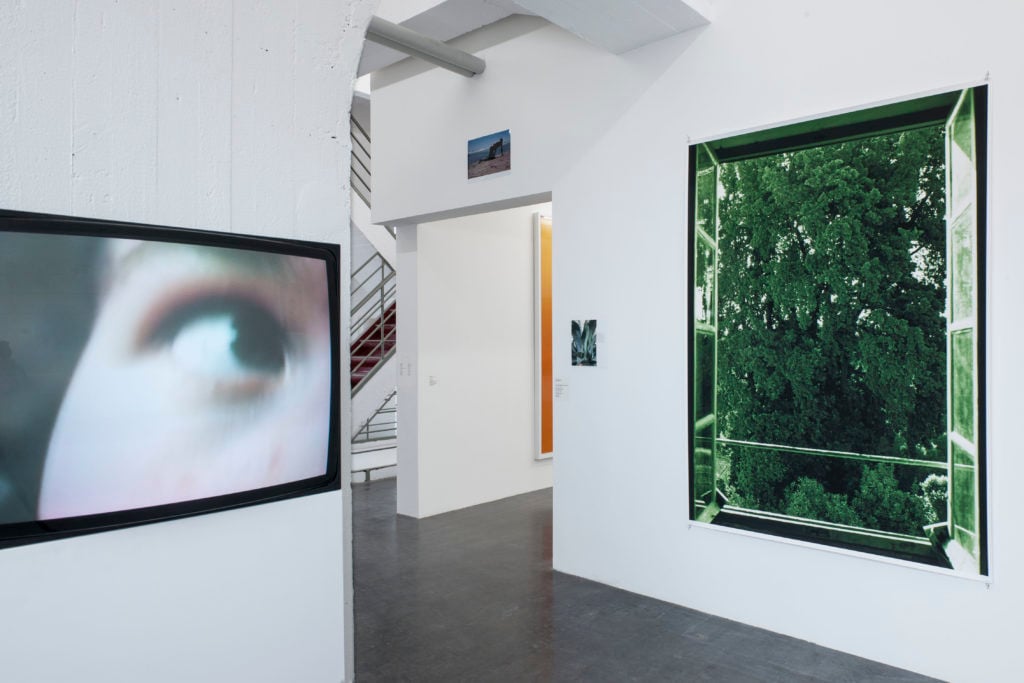
Wolfgang Tillmans “Today Is The First Day.” WIELS 2020. Photo: Philippe De Gobert.
Do you feel that your political campaigns were successful?
When I first conceived the anti-Brexit pro-EU campaign in March 2016, it was done in notwehr—in emergency self-defense—because I saw that the whole mode on which my life is based on was under direct attack.
What was really a success was the voter turnout in the European elections. One cannot attribute any single campaign to the successes of that election. I wanted to do what I can, even if nobody speaks positively about the EU, even from the Remain side. I wanted to try because, if nobody else does speak positively, it will be lost. Of course, in 2016 no one thought that the Brexit referendum would be lost, but I had the very strong sense that it could go wrong. If the outcome isn’t exactly how you want it, to think that what you did was in vain would be a terrible point of view to take. That means then that only dictatorship of your will would satisfy you.
The world has changed so much, even since 2016.
We had no idea what the 21st century would be like in 2007. It is interesting, suddenly from last year to this year there was this feeling of change. In combination with artificial intelligence, there were changes in attitudes towards climate change, economical shifts, and the role of China in surveillance, all of which are suddenly gathering momentum with what came four years ago: the populist wave, which had been building in a lesser noticed way before. Now you have this entire complexity on the table.
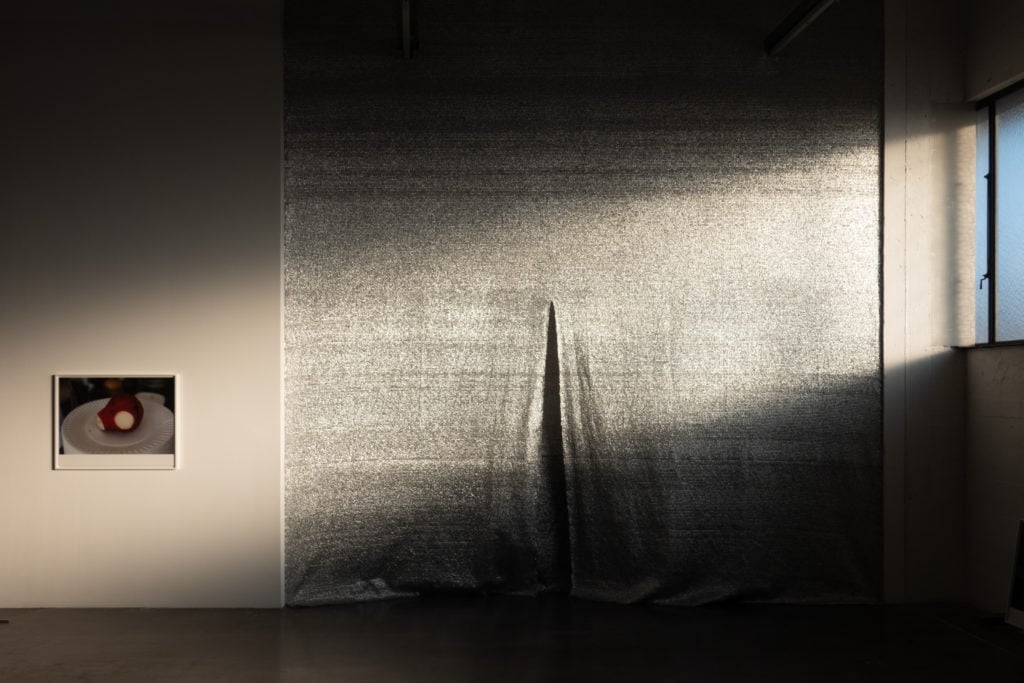
Wolfgang Tillmans “Today Is The First Day.” WIELS 2020.
What do you make of this surge of activism in the art world?
The last few years have been a bit of a wake up call. I don’t feel that artists per se should have to be more activist or more political. I think all people should be more involved—every banker and baker. We all should be interested in what is going on and take the whole thing seriously. Activism is really about generating change with means that are available to you. It is not about how good you look while doing it, or that every step is being viewed or seen. A lot of real political change happens in un-glamorous and not in Instagram-ready ways. More and more people are interested in politics but fewer people are getting themselves into politics.
There has been so little activism by so many in the last 20 years that art has become quite navel-gazing in a lot of ways. So I am not going to complain about the political voices and actions that do happen now, since there are still so few. The urgency of the situation will hopefully be met with a sustained response.
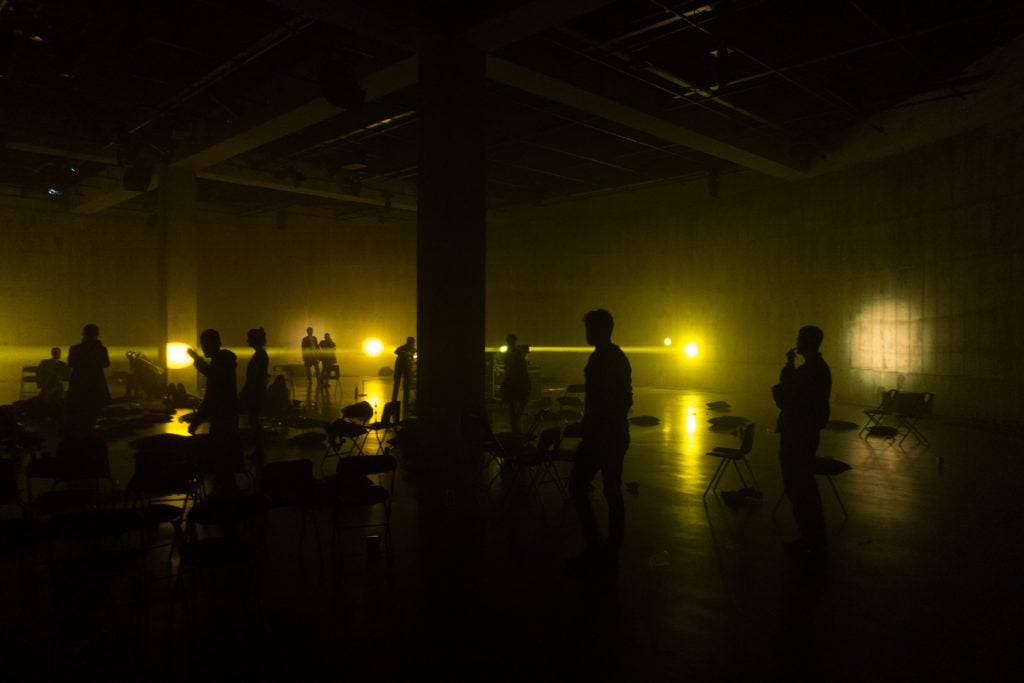
“Wolfgang Tillmans: South Tank (March 3–12, 2017). Programme of live events)
Given that you have long worked to bring a spotlight to the margins of society,, I wonder what you think about some of the more recent criticisms of identity politics.
I think as a gay person, I could certainly not be the one saying something is too fringe or alienating. For example, with the discussion over gender-neutral washrooms, I don’t feel one can or should draw a line because the whole question of gender still hasn’t been fully addressed and understood. What if women had always been careful and decided not to ask for all rights? A woman asking to vote and to open a bank account in Europe without the consent of their spouse would have been making what seemed like a fringe claim in the 1950s. [In 1975, the Sex Discrimination Act was introduced in the UK, allowing British women to open bank accounts.]
We have experienced 50 years of political progress, and that hasn’t always pleased everyone, but somehow the progressive side, even through conservative years, have had the upper hand somehow. Somehow that has created a push back from a part of the population that never liked it in the first place. Now, they feel like they have a narrative where suddenly the urban left is suddenly labeled “elite” and against the people. That is a fascinating twist that would have been hard to think up 10 years ago. I really and strongly believe that more equality does not mean fewer rights for anyone else, but that feeling is not shared by all because of ideas about privilege. Privilege and rights are different matters.
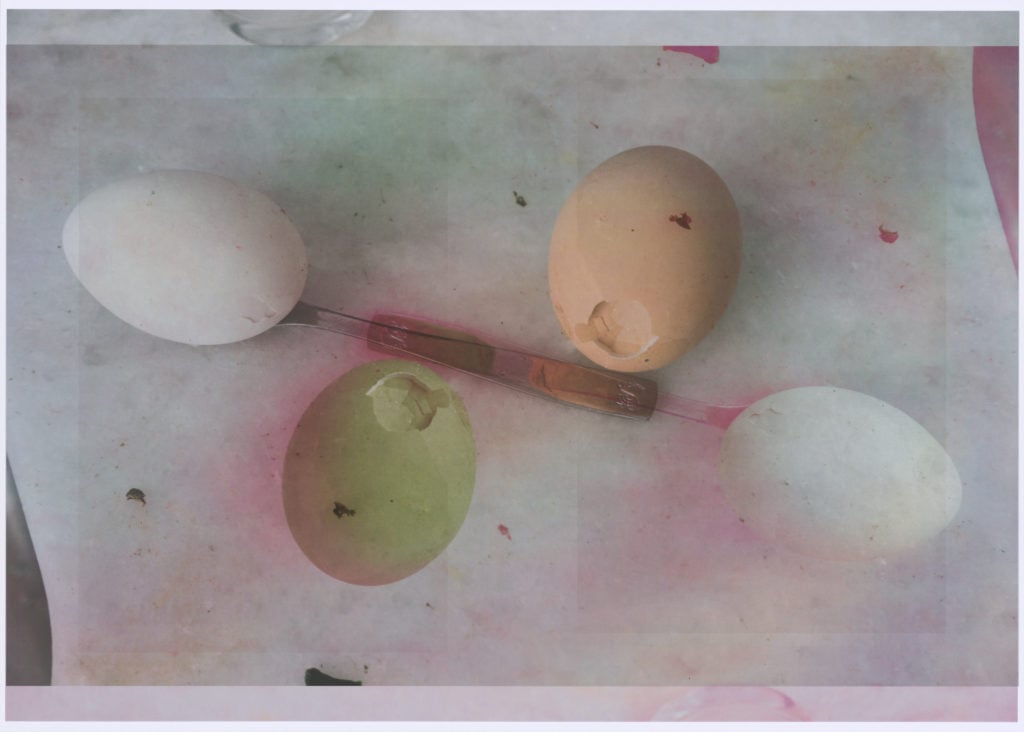
Wolfgang Tillmans, Philharmonie Bloch I (2017.) © the artist, courtesy Galerie Buchholz, Berlin/Cologne, Maureen Paley, London, David Zwirner, New York, Galerie Chantal Crousel, Paris.
Do you see your work as political? Does it become difficult to disentangle your political activism and your work?
The reason I wanted to speak with photographs that stem out of the vicinity of my life didn’t come from the motivation that I wanted to talk about my life. I wanted to talk about what it feels like to live today. I had a sense of wanting to get involved because I understood the political nature of picture-making from the start. It is record keeping, which is never neutral. What is recorded and what isn’t recorded and what‘s kept and isn’t kept is always political. It was about the new freedoms of personal expression, living your sexuality in the early 1990s, the freedom of Eastern and Western Europe to come together, the power of techno to work and bring people together across borders on dance in various states of connectivity and physicality. I understood those things as new and they would not have happened if other people had not fought battles for women’s rights, racial equality, and gay rights in the decades before.
Because they were newly won rights, I also had a sense of how special it was and that it wasn’t always like this. On the one hand, I wanted to be a genuine contributor to it, and at the same time I wanted to be an amplifier by making pictures of it, to spread the feeling. As a third angle, I saw it as a story to write. When I published my first book with TASCHEN in 1995, I was 26 and some friends had questioned the move, because it is such a big publisher, thinking that putting out a book so young might frame me and pin me down. But I had a strong sense that I wanted this to be in this high-quality print and have a high reach so that the story is on record. Now, we do see that there are rights moving forward but there are constantly people that want to turn back the clock.
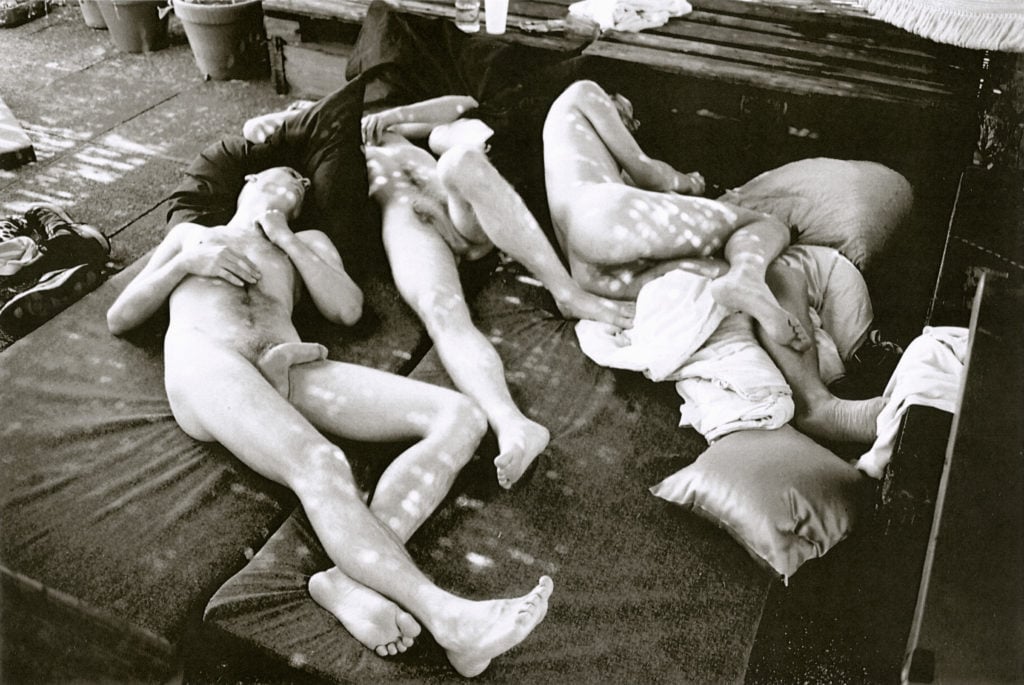
Wolfgang Tillmans, FKK naturiste (2008). © the artist, courtesy Galerie Buchholz, Berlin/Cologne, Maureen Paley, London, David Zwirner, New York, Galerie Chantal Crousel, Paris.
What is at the core of your love for photography? What continually draws you to it?
I love photography and I am acutely aware how difficult photography is to make because it is so “simple.” I take great joy when I see good photographs, that “goodness” is of course determined by very different criteria. A science picture or an animal wildlife photograph each have their own criteria and that is quite unique to this medium. “Photography” is used across the board to mean everything from X-rays to a large format Jeff Wall. In that sense, I enjoy it on many levels. News photography had always interested me and I was touched by the potential of the photograph in a newspaper.
I do, for example, love the portraiture of Peter Hujar. When you see them, you just see. Photography is so hard because it is so hard to fake it. What you sense in a Hujar portrait, it could not be there if it had not been between these two individuals. What you see in his pictures is a record of a psychology that found a shape on these silver crystals on the film.
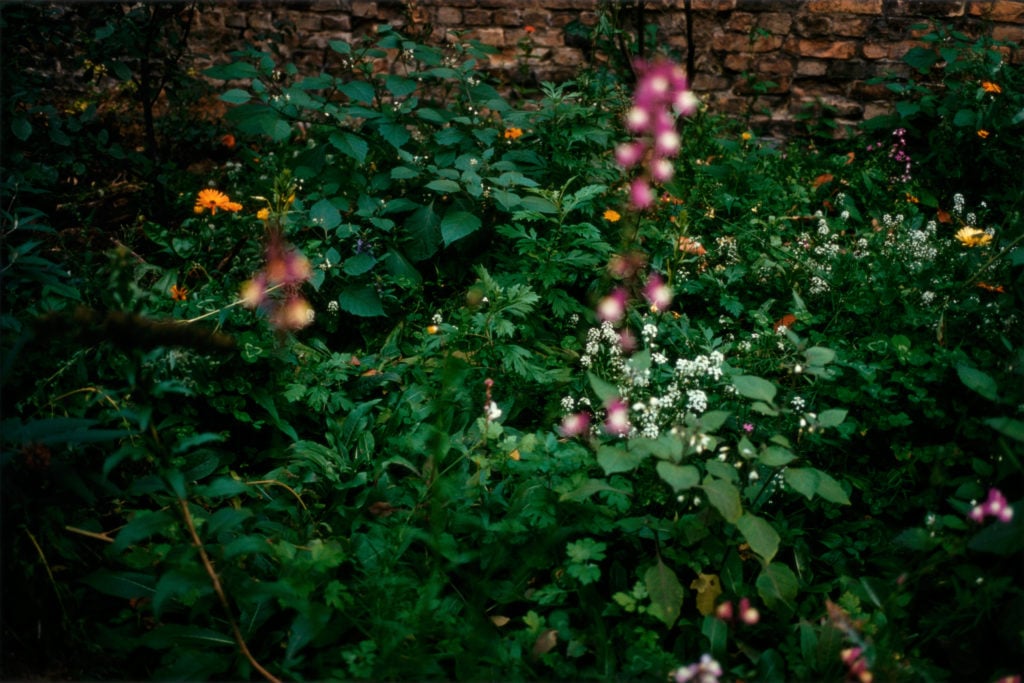
Wolfgang Tillmans, Garten (2008). © the artist, courtesy Galerie Buchholz, Berlin/Cologne, Maureen Paley, London, David Zwirner, New York, Galerie Chantal Crousel, Paris.
Can you tell me a bit about what you are planning for this major retrospective at MoMA?
MoMA is a big institution that wants to plan well in advance and I am using this challenge as a creative challenge in that I am not going to leave everything sort of fluid until the end. Somehow, we are going to be onto a show plan fairly soon. It is interesting that preparing for this MoMA retrospective mode has caused me to actually think forward into the next 30 years.
In May next year, I am invited to MoMA for a month to “the Studio,” which is part of the extension that opened in October. It is dedicated to performing live arts and forms of time-based art that, in the past, has usually been physically segregated from the picture and sculpture part of museums. For that, I am further developing a project that I did at the Tate Tank where, for 10 days, I did an installation called South Thank which was a 100-minute soundtrack and 20 programmable lights that I made a kind of choreography for. There was a video, sound, and live program in the evening. I will be expanding on those performative interests.
The elements are also present in Brussels. For example, there is a video from 2013 where I explore being myself and using my voice differently. Looking at these works has reinvigorated my interest in my photography. It wasn’t that I was uninterested in my photography, but it is somehow now a more complete whole, now that all these new interests over the last five years have somehow been matched by a renewed interest in photography. But my home is photography.
Wolfgang Tillmans’s exhibition, “Today Is the First Day,” is on view at WIELS in Brussels until May 24, 2020.